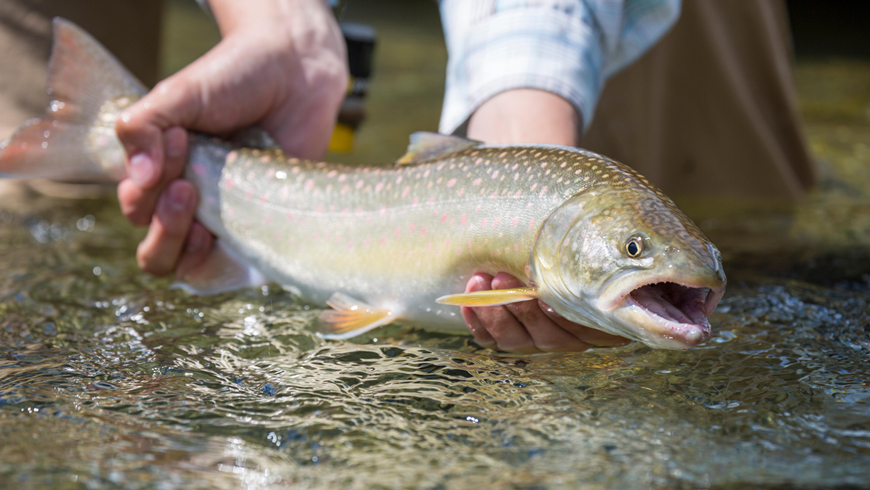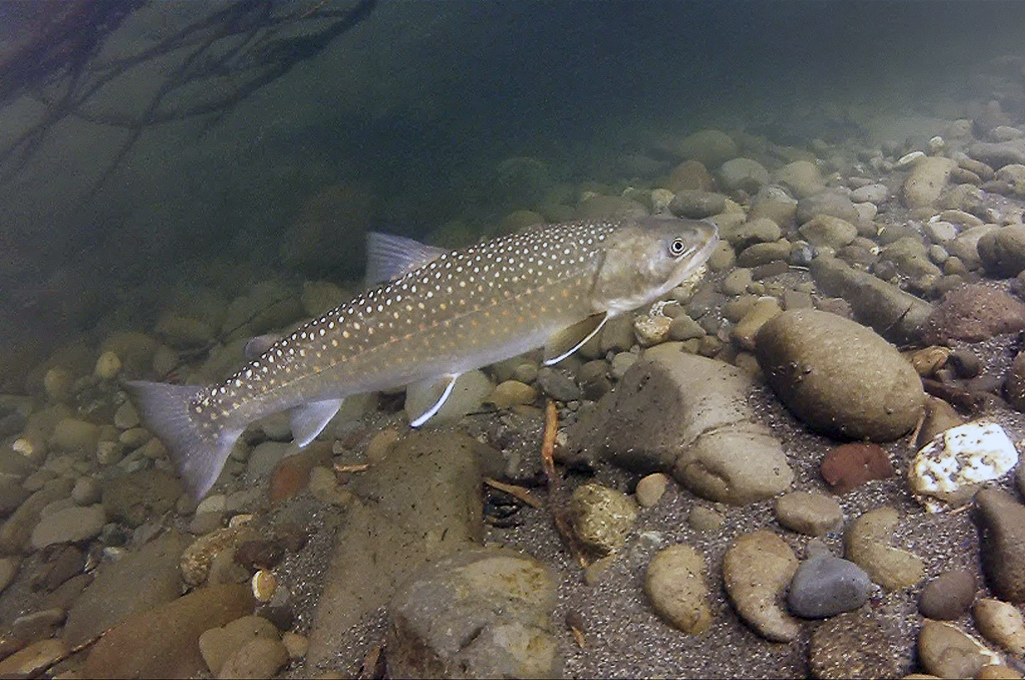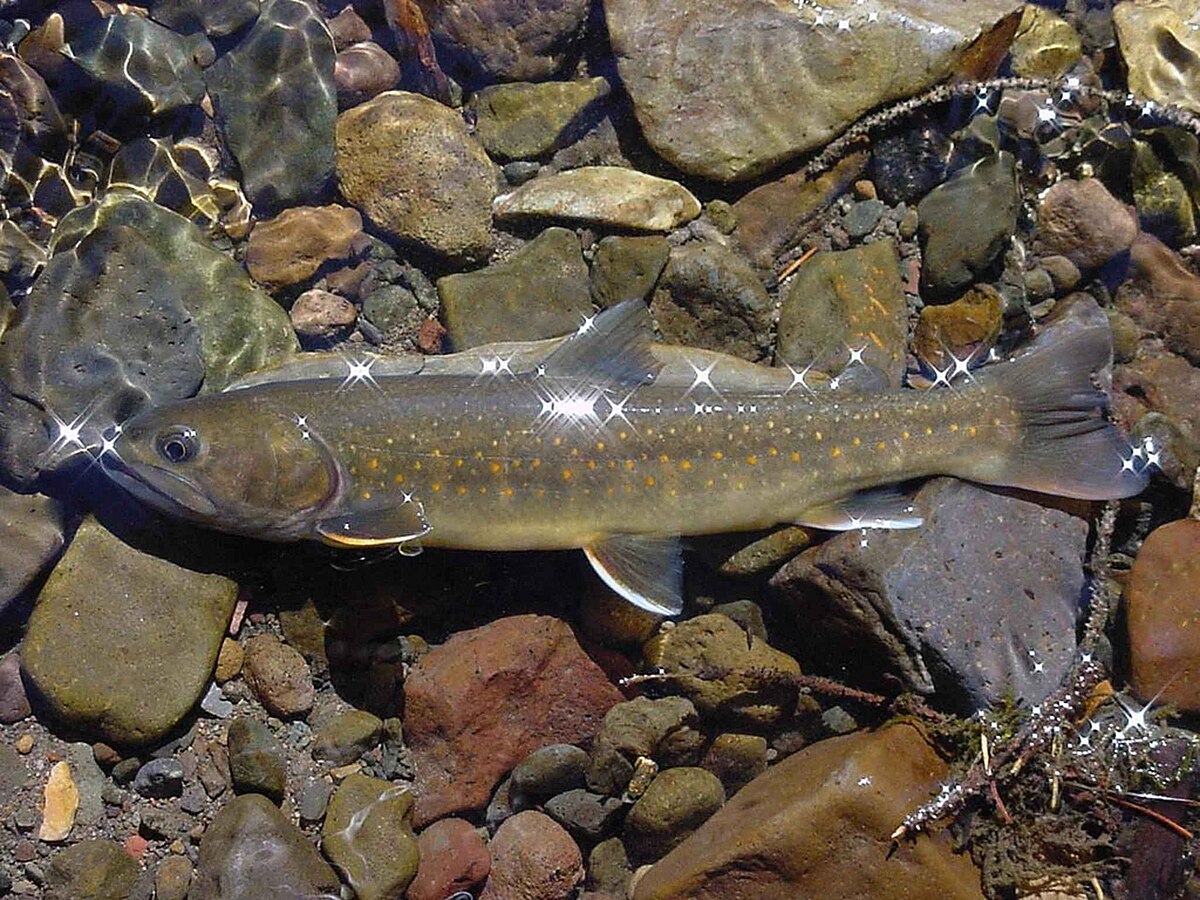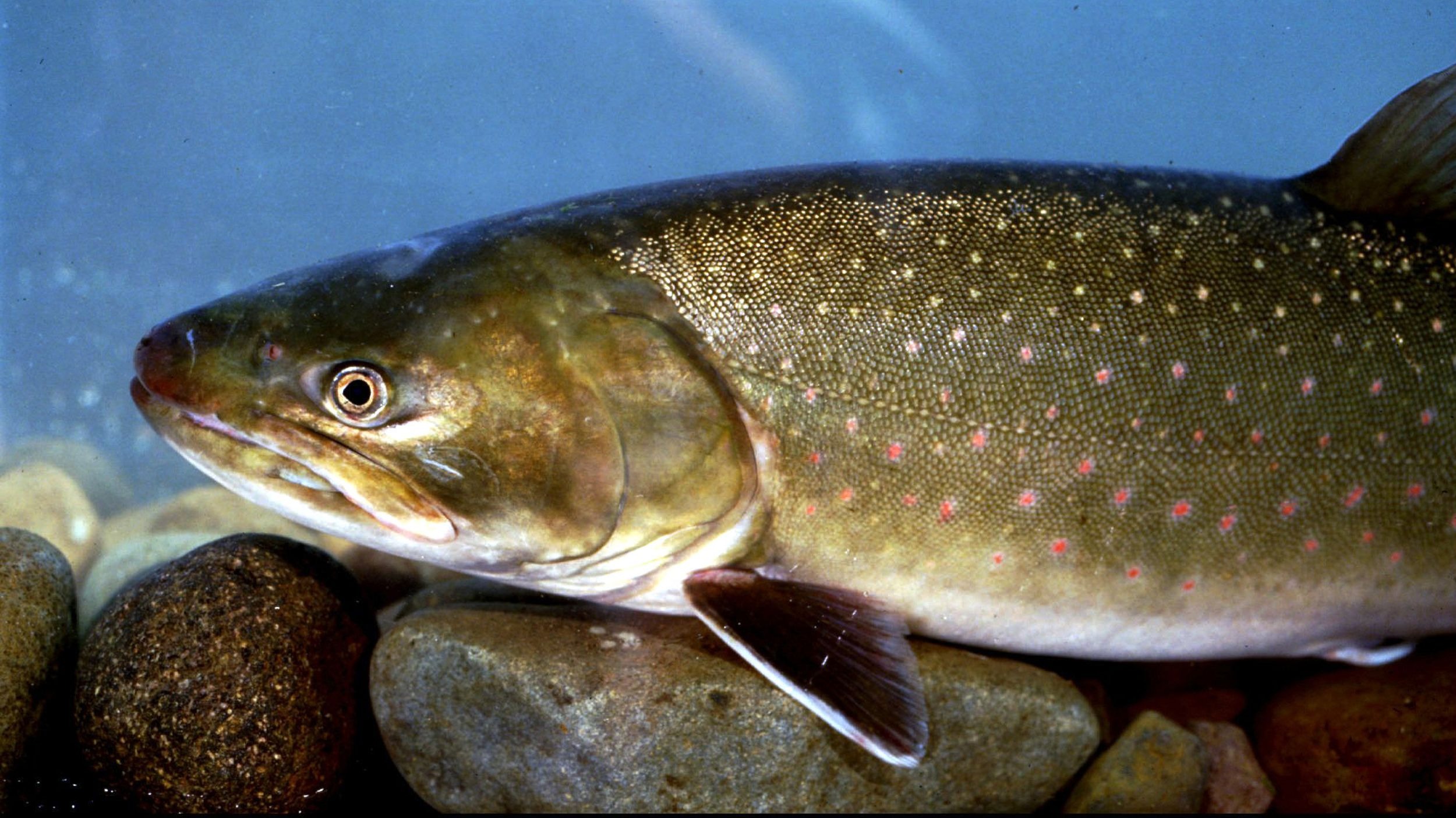The bull trout (Salvelinus confluentus) is a remarkable freshwater fish known for its impressive size and aggressive nature. This elusive species thrives in cold, clean waters, and is highly valued by anglers and conservationists alike for its unique characteristics and ecological importance.

Basic Info
- Common Name: Bull Trout
- Scientific Name: Salmo certi
- Group Name: Salmonidae (Salmon family)
- Average Life Span In The Wild: 10-15 years
- Size: Can grow up to 40 inches (100 cm) in length
- Weight: Can weigh up to 30 pounds (14 kg)
Behavior
Bull trout are known for their aggressive and predatory behavior. They primarily feed on smaller fish, including other trout species, and are known to inhabit cold, clean waters. Bull trout are often found in deep pools, rivers, and large lakes. During their spawning season, they migrate upstream to find suitable gravel beds where they can lay their eggs.
How to Identify
Bull trout can be identified by their distinctive appearance:
- Body Shape: They have a slender, torpedo-shaped body that is well-suited for swimming.
- Coloration: Their coloration varies depending on their age and habitat. Younger fish often have a dark brown or olive-green back with lighter sides and a white belly. As they mature, they may develop a reddish or pinkish hue.
- Spots: Bull trout have small black spots on their sides, especially on the upper part of their body.
- Head: Their head is large and blunt, with a prominent lower jaw.
Bull trout are a fascinating and important species of fish found in the Pacific Northwest. They play a crucial role in the ecosystem and are a popular target for recreational fishing.
Some pictures of Bull Trout











Robert Smith is the proud owner of Bait Barrels and Bows, a premier fishing sports store established in 1989. With over three decades of experience in the industry, Robert has honed his skills to become an expert angler, sharing his vast knowledge and passion for fishing with enthusiasts around the world. Through his store and writings, Robert provides invaluable tips and guidance, helping both novice and seasoned anglers improve their techniques and enjoy the sport to its fullest. His commitment to the fishing community is evident in his dedication to quality products and excellent customer service.

